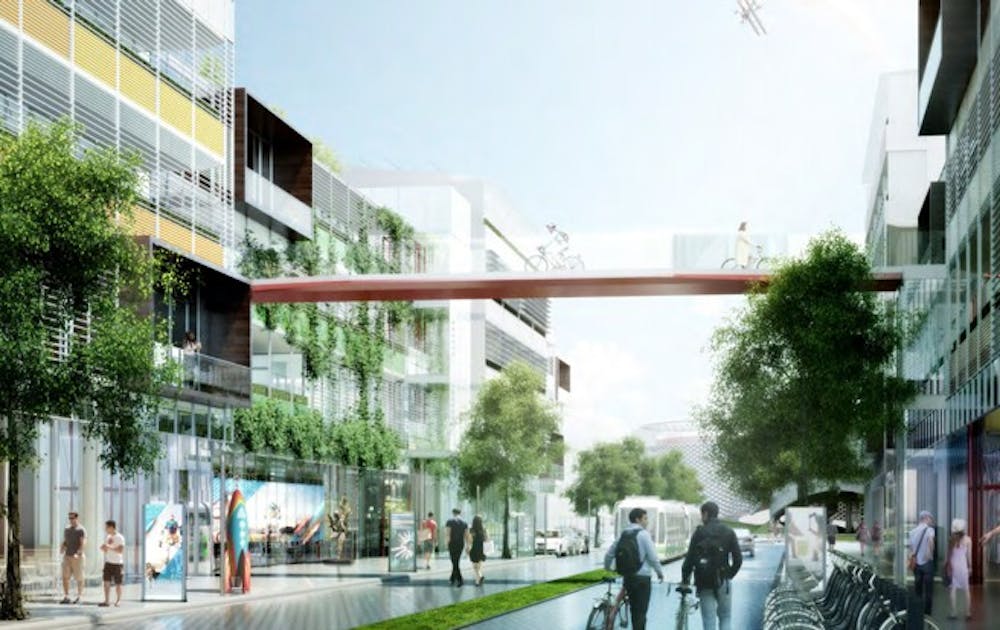Leaders of Research Triangle Park recently unveiled their master plan to attract younger generations of entrepreneurs and develop a more sustainable park.
The plan aims to refocus development to accommodate new companies and adapt to the changing needs of its present research and technology companies. The Research Triangle Foundation, which manages the research park, will create a small city within the park by building office space, shopping centers and residential developments, among other facilities. The urban centers will exist in three different locations throughout RTP and account for more than 12.5 million square feet of new development.
RTP was established in 1959 to leverage the research capacity at the surrounding universities—Duke, North Carolina State University and the University of North Carolina at Chapel Hill—to create an attractive location for research-oriented companies. The public-private partnership has grown to house more than 170 companies and 22.5 million square feet of development, playing a significant role in the economic growth of the Triangle region.
“Research Triangle Park is 50 years old and needs to adapt to the changing needs of the industry,” Bob Geolas, president and CEO of Research Triangle Foundation, wrote in an email Tuesday. “These new urban centers will provide the kind of amenities and destinations that will draw people into Research Triangle Park to live and to visit.”
The design also includes plans for reducing carbon emissions via efficient energy usage. Most new construction will attempt to meet Leadership in Energy and Environmental Design Gold Certification—the second highest rating awarded by the U.S. Green Building Council for sustainable construction—and will incorporate some form of geothermal or solar energy. Light rail and commuter rail—a form of urban rail public transportation—could also be included in RTP’s new design as transportation alternatives to single-occupancy vehicles.
For the past 50 years, RTP has grown and developed by selling land to major companies. Now, only 9 percent of the Park’s 7,000 acres remain undeveloped.
Research Triangle Park currently accommodates approximately 38,000 employees, said HR&A Advisors Chairman John Alschuler Jr., whose firm consulted for the master plan, in a presentation on Nov. 9. Under current rules and regulations, RTP can house 45,000 employees. With the implementation of this master plan, however, capacity may more than triple to over 150,000 employees.
Such large expansions in capacity may translate to higher economic revenue across North Carolina and increase job opportunities for entrepreneurs emerging from Duke.
“[This] new plan is very much about how we continue to support our mission—work with the universities, create jobs and improve the quality of life for all the people [in] North Carolina,” said Geolas. “We would very much like to work with our universities to create new models of support for students, faculty and research programs.”
On Nov. 13, RTF leaders kicked off a three-week statewide bus tour to spread awareness about the new plan in communities outside of the Raleigh-Durham area. They are currently discussing with citizens and policy makers about how to bring greater value to North Carolina, Geolas said.
“We have a mission to improve quality of life across the state,” said Geolas. “We want to make Research Triangle Park an inspiring place that represents the innovations and advancements made in RTP and North Carolina and make the place special and authentic.”
Get The Chronicle straight to your inbox
Signup for our weekly newsletter. Cancel at any time.

